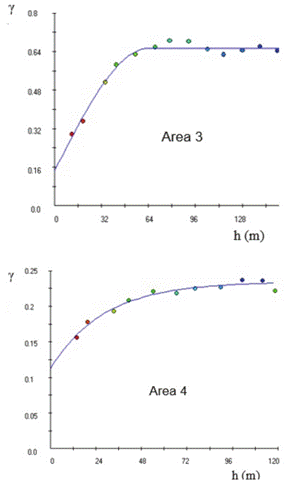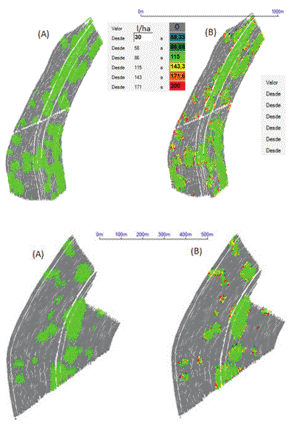ABSTRACT.
Sphenophorus levis has become a major pest of sugarcane plantations in Brazil, causing significant losses in productivity. Few studies have been conducted on the spatial distribution of this pest in the field, which is essential for the development of sampling plans. We aimed to characterize the spatial distribution of S. levis in sugarcane, defining a reliable, practical and feasible sampling plan, as well as generating application maps for production areas, allowing for comparison of the consumption of inputs in a conventional system with site-specific application. The study was conducted in areas around Piracicaba, Brazil. First, we conducted sampling to evaluate the best sampling density to characterize the spatial dependence. The results showed that the procedure in which the evaluators entered every 20 rows of sugarcane and sampled every 20 m was sufficient to characterize the spatial dependence. In separate areas, the sampling was performed similarly to the previous step, and after generating the application maps, insecticide was applied on a site-specific basis. Even using the more strict control level defined by the producer, there was considerable saving for the pesticide used. In the two fields, the percentage of the infestation-free area was 56.1 and 80.7%.
Keywords:
geostatistics, site-specific application; precision agriculture; entomology; soil pests; sugarcane weevil.

 Thumbnail
Thumbnail
 Thumbnail
Thumbnail
 Thumbnail
Thumbnail
 Thumbnail
Thumbnail
 Thumbnail
Thumbnail







